NREL Water Power Newsletter, The Current, Fall 2023
Catch up on NREL water power news and events, including NREL's participation at Clean Currents, the latest Spark Squad comic book series, and how NREL researchers help marine energy companies prepare for the ocean.
This quarterly newsletter highlights the latest from NREL's Water Power Program.
Subscribe To Newsletter
To receive quarterly updates about NREL water power news, accomplishments, events, and more, subscribe to The Current newsletter.
SUBSCRIBEIn This Issue
Make a Splash Photo and Video Contest
NREL at Clean Currents
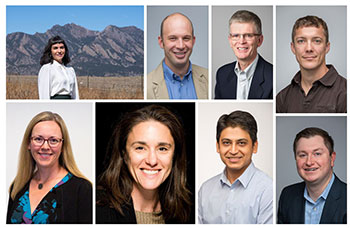
Catch NREL researchers presenting at the Water Power Technologies Office's booth (#611).
Tuesday, Oct. 10
1–5 p.m.: Student Day—Gathering of Hydropower Collegiate Competition Students and Academic Advisors—presented by Elise DeGeorge and STEM Team
3:30–5:30 p.m.: Deep Dive Workshop: The Art of Public Speaking—featuring Jennifer Daw and other speakers
Wednesday, Oct. 11
10 a.m.–12:15 p.m.: Hydropower Operations Optimization (H2Os) Prize Phase 4 live competition
11 a.m.–12 p.m.: D1: Domestic Manufacturing and Supply Chain—featuring hydropower supply chain analysis supported by NREL
11:20–11:40 a.m.: Hydropower RAPID Toolkit—presented by Aaron Levine
12–1 p.m.: Student-Industry Knowledge Exchange Event With Hydropower Collegiate Competition—presented by Elise DeGeorge and STEM Team
1–2:30 p.m.: H2Os Poster Session
1:55–2:15 p.m.: Pumped Storage Hydropower Resource Assessment and Supply Curves Tool—presented by Stuart Cohen
3–4 p.m.: H2Os Technical Presentations
3:20–3:40 p.m.: Hydropower Cybersecurity Value-at-Risk Framework—presented by Anuj Sanghvi
4:15–5:15 p.m.: Workforce Management and Succession Planning—Properly Training New Hydropower Generation Employees for Both Large and Small Organizations—featuring Jennifer Daw and other speakers
Thursday, Oct. 12
11–11:20 a.m.: Modeling Marine Energy Systems With the System Advisor Model—presented by Elena Baca
11:40 a.m.–12 p.m.: Hydropower STEM to Workforce—presented by Jennifer Daw and STEM Team. NREL will also be present at the Water Power Technologies Office booth at this time to share information on NREL’s STEM to Workforce project and to talk with interested parties to help develop a succession planning and knowledge transfer toolkit for hydropower.
12–1 p.m.: H2Os Award Ceremony
3:20–3:40 p.m.: Climate and Water Risk to the Bulk Power System—presented by Stuart Cohen
Make a Splash Photo and Video Contest
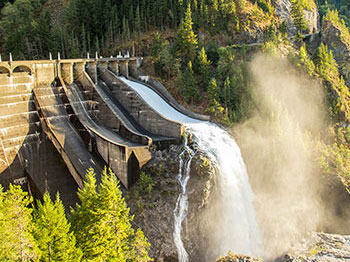
What To Watch
NREL’s water power research extends beyond our Colorado home—reaching from coastlines in Hawaii and Oregon to rivers in Alaska and Mississippi and islands off the coast of Maine to Puerto Rico. That coastal reach is critical to our work: To help achieve a 100% clean energy future, our researchers are working to refine water power technologies. In Colorado, our experts can mimic the ocean with computers and specialized instruments. But to build technologies destined for wild, salty waters, at some point you need the real thing. Watch this video to see just how far NREL’s water power work can reach—with help from coastal partners.
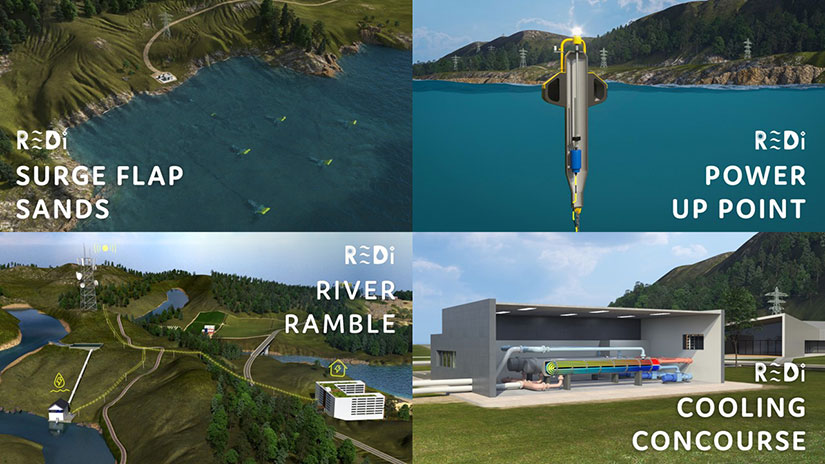
Ready for more REDi Island?
Streaming videos of NREL's Renewable Energy Discovery (REDi) Island just got a whole lot easier. Check out our new REDi Island playlist to explore how the water power waystations help power the island.
Hydropower News
NREL Analysis Reveals Benefits of Hydropower for Grid-Scale Energy Storage
After conducting a life cycle analysis of closed-loop pumped storage hydropower, NREL researchers discovered promising news: These systems stand out as the most climate-friendly method for storing energy when accounting for the full impacts of materials and construction. The study, reported in the journal Environmental Science and Technology, compares closed-loop pumped storage hydropower with other grid-scale storage technologies—such as compressed-air energy storage and different types of batteries—and demonstrates that closed-loop pumped storage hydropower can support a higher amount of renewable energy on the grid with the smallest carbon footprint.
Check out the recent episode of the NREL podcast “Transforming Energy” that highlighted this study.
Latest Spark Squad Comic Brings Hydropower Into the Spotlight
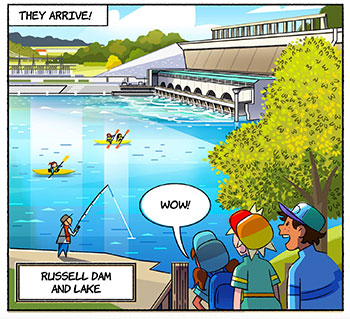
In a new hydro-themed edition of the Spark Squad comic book series, which follows a troupe of precocious kids as they explore different types of renewable energy, the squad takes a road trip to the Richard B. Russell Dam and Lake. Hydropower is key to a resilient and reliable clean energy power system, but the industry is facing a wave of retirements. The team behind the hydro-themed comic hopes this story can help make hydropower more visible.
Unlocking Hydropower’s Potential: REDi Island Demonstrates Water Power Technologies
Hydropower systems will be vital to our transition to a clean energy-powered grid. The new virtual Renewable Energy Discovery (REDi) Island demonstrates hydropower's potential—a potential that NREL researchers are working hard to optimize.
Dive into a few of REDi Island’s waystations to get a clearer picture of the research NREL is leading on these hydropower technologies—and to investigate the diverse career pathways that hydropower has to offer.
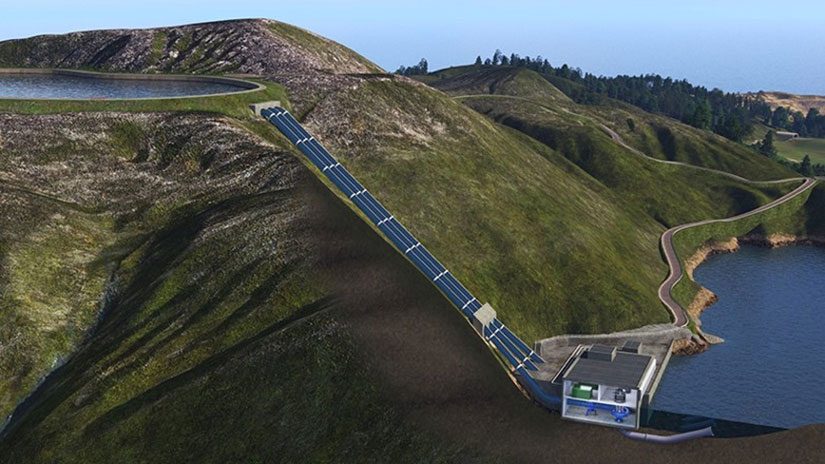
RAPID Toolkit Updates Explain How New Government Regulations Might Affect Future Hydropower Projects
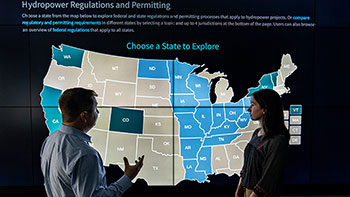
To help navigate these regulations, NREL maintains the Hydropower Regulatory and Permitting Information Desktop (RAPID) Toolkit, a curated library of the federal and state regulations that can impact new or ongoing hydropower projects—all of which touch some kind of water. In 2023, the RAPID team has been deciphering how recent policy changes and a smattering of new federal and state rules could affect the hydropower industry.
Check out this video to learn more about the RAPID Toolkit.
Marine Energy News
NREL Researchers Help Marine Energy Companies Prepare for the Ocean
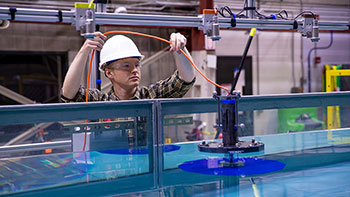
Researchers at NREL are helping four promising wave energy devices prepare to survive a big first. The four will be the first technologies to face the waves at PacWave South, a new grid-connected wave energy test site off the Oregon coast that opens in 2025.
NREL’s lab support, which is funded by DOE’s Water Power Technologies Office, will ensure these four devices can edge closer to commercial success and ace their PacWave open-ocean trial.
Check out this video to learn more about how the NREL wave tank and rapid prototyping processes are helping research and development projects get closer to open-ocean trials.
New Study Provides Better Estimates of How Much Power Is Contained in Ocean Waves
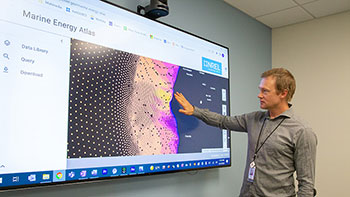
Wave energy is not only predictable—making it a valuable complement to variable renewable energy sources—but also available along coastlines, where the majority of the world’s population lives. But wave energy could do more than power coastal communities; this renewable could create clean drinking water from the ocean, power offshore seafood farms, and help decarbonize international shipping—all with energy from the ocean itself.
No Ocean Needed To Validate Offshore Tech With New Motion Platform
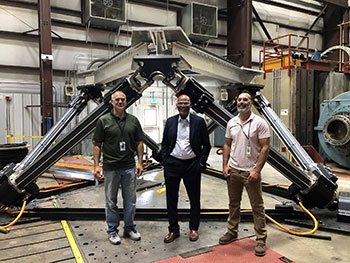
Wave Energy Converter SIMulator Now Connected to Offshore Wind Turbine Modeling Tool
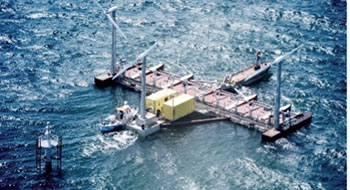
Wave Energy Converter SIMulator, an open-source wave energy converter modeling tool developed by NREL and Sandia National Laboratories, can now be used alongside MOST (MATLAB for Offshore Simulation Tool), a software that simulates floating offshore wind turbines, hybrid wind-wave energy converters, platforms with multiple turbines, and more. Both tools are now packaged, installed, and run together to ensure ease of use by designers and developers looking to model hybrid energy systems.
Researcher Highlight: Abhishek Roy

If you drink tap water, you can probably thank Abhishek Roy.
A good amount of the world’s drinking water gets purified through something called a reverse osmosis membrane, which filters out salt and other contaminants. And if your water squeezes through this kind of filter, it is likely that Roy helped build it. But even if you cannot thank Roy for that particular membrane, there is a good chance you will benefit from at least one of his many others. He currently holds 75 patents worldwide.
As a warming climate strains our water supplies, these little enablers are becoming even more valuable. Roy’s most prolific membrane not only improves water quality by 40% but also uses 30% less energy than its predecessors. Those energy cuts could help reduce global carbon emissions and slow climate change—and so could Roy’s hydrogen-powered fuel cells, which need membranes to generate clean energy for things such as power plants, cars, and even laptops.
But Roy isn’t just preventing new emissions; his inventions could also help remove carbon that has already escaped into our atmosphere.
Read more about how Roy is helping reduce global energy use, generate clean drinking water, capture carbon, and generally save the planet.
Prizes and Competitions
New Prize Doubles Down on Success of Earlier Community-Based Prizes
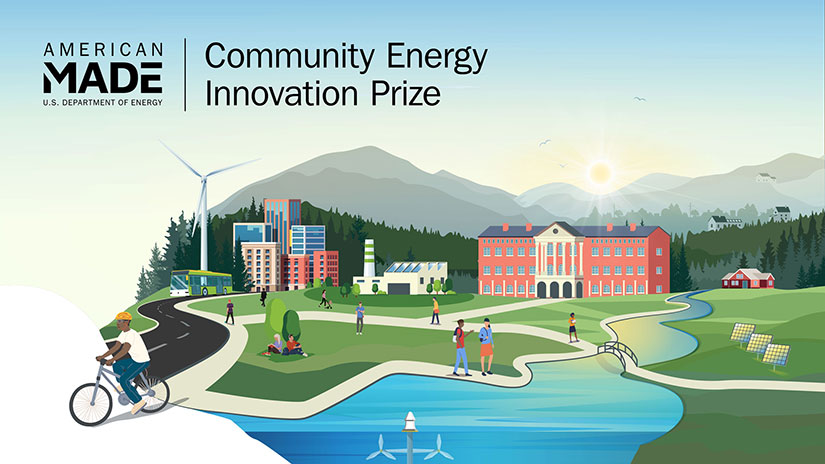
After the groundbreaking success of the Inclusive Energy Innovation Prize and the Community Clean Energy Coalition Prize, DOE is launching a new challenge that combines the two prizes, this time expanding the reach to community organizations, manufacturers, nonfederal government entities, and college students.
The three-phase $7.49 million Community Energy Innovation Prize will continue to encourage the transition to a just and equitable clean energy economy by offering three prize tracks: the Clean Energy Ecosystem Track, the Manufacturing Ecosystem Track, and the Collegiate Track. By broadening its reach, the prize aims to bolster grassroots community organizations, accelerate innovation in the manufacturing sector, and inspire and mentor collegiate students.
NREL-Administered Water Prize Launches Phase 2 To Harness Grid-Scale Power From Waves
DOE’s Water Power Technologies Office just launched Phase 2 of the American Made Innovating Distributed Embedded Energy Prize, which was inspired by NREL’s growing research in distributed embedded energy converter technologies. The second phase of the three-part competition challenges competitors to build and test a single distributed embedded energy converter—a preliminary step for scaling these technologies for wave energy’s contribution to the grid. This phase will be the final opportunity for new teams to enter and add new members.
Beneath the Surface: Black Boxes, Robot Arms, and a Beloved Wave Tank
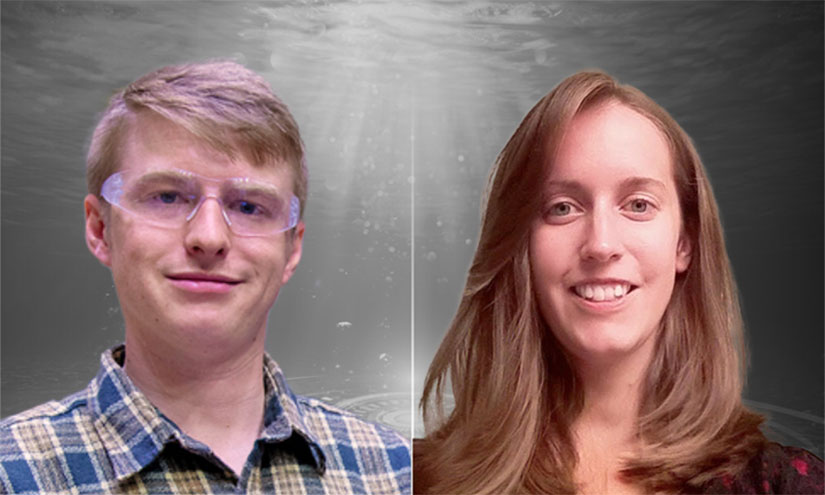
NREL’s testing team is making sure all the lab’s varied water power research happens as smoothly as possible. It puts new technologies through rigorous tests, tinkers with designs, and purchases new instruments, such as the lab’s wave tank and motion platform, to perform even better tests. In short, it helps guide water power devices from the lab to the ocean and, eventually, the market.
To spotlight these testing treasures, we spoke to two NREL researchers, who shared stories about their career origins (which involved PVC pipes and weather forecasting) and their day-to-day work.
Learn more about Charles Candon and Rebecca Fao.
Events and Opportunities
Visit the NREL Water Research Events page for more event information and registration details on upcoming workshops.
Clean Currents
Oct. 10–13, 2023, Cincinnati, Ohio
Presented by the National Hydropower Association, Clean Currents is a national water power tradeshow and conference that brings together industry professionals from various sectors, including conventional hydropower, pumped storage, small hydro, and marine energy. The event facilitates collaboration, encourages innovation, and advances the industry toward a sustainable and clean energy future.
American Geophysical Union 23
Dec. 11–15, 2023, San Francisco, California
Catch NREL at the American Geophysical Union’s annual meeting, where scientists, educators, policymakers, journalists, and communicators meet to better understand our planet and environment.
NREL in the News
Marine Energy Mentions
9News visited the Flatirons Campus on Sept. 20, 2023, to film the new wave tank and motion platform
NREL Researchers Help Developers Prepare for Harsh Wave Energy Conditions of the Pacific, Offshore Energy (Sept. 14, 2023)
NREL Prepares Four Wave Energy Devices for PacWave South Deployment, Power Engineering International (Sept. 13, 2023)
Wave Energy Gets Ready for a Big First, CleanTechnica (Sept. 12, 2023)
Researchers Assist Marine Energy Companies in Preparing for Ocean Trials, EnergyPortal.eu (Sept. 12, 2023)
How Much Wave Energy Is in Our Oceans?, EnergyPortal.eu (Sept. 3, 2023) and in CleanTechnica (Sept. 2, 2023)
National Laboratory Researchers Develop New Method To Measure Wave Energy, Hydro Review (Sept. 1, 2023)
U.S. Researchers Present Methodology for 'More Accurate' Wave Energy Resource Assessment, Offshore Energy (Aug. 31, 2023)
Powering the Digital World: The Potential of Ocean Thermal Energy, EnergyPortal.eu (Aug. 24, 2023)
This Company Devised an Unbelievable Way To Power Cities With 'Wave Energy' From the Ocean—but There Are Plenty of Naysayers, Yahoo! News (Aug. 22, 2023)
Hydropower Hoopla
New Hydro-Themed Comic Book Aims To Spotlight Hydropower's Hidden World, International Water Power & Dam Construction (Sept. 18, 2023)
The Weather Channel Hosted NREL’s Jenny Wiegele To Discuss the Spark Squad Comic Book Series, (Aug. 24, 2023)
DOE Report Reveals Benefits of Hydropower for Energy Storage, Environment + Energy Leader (Sept. 8, 2023)
NREL Study Highlights Closed-Loop Pumped Storage Hydropower as Climate-Friendly Grid-Scale Energy Storage Solution, International Water Power & Dam Construction (Sept. 4, 2023)
Pumped Hydro Is Climate Friendliest for Grid-Scale Energy Storage, Study Says, PORTLANDINNO (Aug. 28, 2023)
Unlocking Hydropower’s Potential, CleanTechnica (Aug. 27, 2023)
Closed-Loop Hydro’s Climate Impact Found Less Than Batteries, RTO Insider (Aug. 27, 2023)
Closed-Loop Pumped Storage Hydro 'Smallest Emitter' Among Rival Technologies, Recharge (Aug. 23, 2023)
Publications
See all the latest publications, or explore these featured publications.
Hydropower
The Role of Hydropower Flexibility in Integrating Renewables in a Low-Carbon Grid, NREL Technical Report (2023)
Storage Effectiveness in Enabling Variable Generation and Avoiding Fossil Emissions, NREL Technical Report (2023)
Designing Hydropower Flows To Balance Energy and Environmental Needs, NREL Technical Report (2022)
Life Cycle Assessment of Closed-Loop Pumped Storage Hydropower in the United States, ACS Publications (2023)
Marine Energy
Electrical Infrastructure Cost Model for Marine Energy Systems, NREL Technical Report (2023)
Distributed Embedded Energy Converter Technologies for Marine Renewable Energy: A Technical Report, NREL Technical Report (2023)
Next-Generation Marine Energy Software Needs Assessment, NREL Technical Report (2023)
PacWave Anchoring and Mooring Study, NREL Technical Report (2023)
Turbulence Modeling to Aid Tidal Energy Resource Characterization in the Western Passage, Maine, USA, Renewable Energy (2023)
Multi-Decade High-Resolution Regional Hindcasts for Wave Energy Resource Characterization in U.S. Coastal Waters, Renewable Energy (2023)
A Scalable Wave Resource Assessment Methodology: Application to U.S. Waters, Renewable Energy (2023)
The Wave Energy Control Competition: Wave Energy Control Algorithms Compared in Both Simulation and Tank Testing, Applied Ocean Research (2023)
Want More?
Subscribe to The Current to get the next water power newsletter in your inbox.
For the latest from the DOE Water Power Technologies Office, sign up for its water power newsletters. Have a more general question or can’t find what you’re looking for? Send us an email at water.power@nrel.gov.
Share

